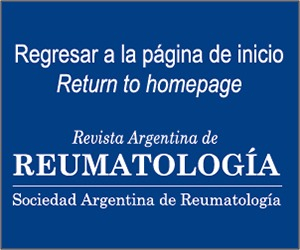Compromiso oral en Esclerosis Sistémica
Resumen
El tracto gastrointestinal (GI) está afectado en hasta el 90% de los pacientes con Esclerosis Sistémica (ES). Los síntomas son variados de acuerdo al sitio y grado de compromiso. Disfagia, reflujo, náuseas, vómitos, dolor abdominal, diarrea, constipación, incontinencia fecal y pérdida de peso son los síntomas más comúnmente reportados. El compromiso GI afecta severamente la calidad de vida y es una de las mayores causas de morbimortalidad de la enfermedad.Citas
I. LeRoy EC, Black C, Fleischmajer R, et al. Scleroderma (systemic sclerosis): classification, subsets and pathogenesis. J Rheumatol. 1988;15(2):202-205.
II. Clements PJ, Becvar R, Drosos AA, Ghattas L, Gabrielli A. Assessment of gastrointestinal involvement. Clin Exp Rheumatol. 2003;21(3 Suppl 29):S15-8.
III. Forbes A, Marie I. Gastrointestinal complications: the most frequent internal complications of systemic sclerosis. Rheumatology. 2009;48(Supplement 3):iii36-iii39.
IV. Steen VD, Medsger TA. Changes in causes of death in systemic sclerosis, 1972-2002. Ann Rheum Dis. 2007;66(7):940-944.
V. Scolnik M, Lancioni E, Saucedo C, et al. Systemic sclerosis in Argentina: evaluation of a large cohort from a single centre and comparison with other international series. Clin Exp Rheumatol. 32(6 Suppl 86):S-94-7.
VI. V itali C, Borghi E, Napoletano A, et al. Oropharyngolaryngeal Disorders in Scleroderma: Development and Validation of the SLS Scale. Dysphagia. 2010;25(2):127-138.
VII. Scardina GA, Mazzullo M, Messina P. [Early diagnosis of progressive systemic sclerosis: the role of oro-facial phenomena]. Minerva Stomatol. 51(7-8):311-317.
VIII. Domsic R, Fasanella K, Bielefeldt K. Gastrointestinal Manifestations of Systemic Sclerosis. Dig Dis Sci. 2008;53(5):1163-1174.
IX. C larke, John O; Hirano I. Scleroderma : From Pathogenesis to Comprehensive Management. First Edit. (Varga, John; Denton, Christopher P; Wigley FM, ed.). Springer; 2012.
X. Ramos-Casals M, Brito-Zerón P, Font J. The Overlap of Sjögren’s Syndrome with Other Systemic Autoimmune Diseases. Semin Arthritis Rheum. 2007;36(4):246-255.
XI. Avouac J, Sordet C, Depinay C, et al. Systemic sclerosis– associated Sjögren’s syndrome and relationship to the limited cutaneous subtype: Results of a prospective study of sicca syndrome in 133 consecutive patients. Arthritis Rheum. 2006;54(7):2243-2249.
XII. Nakamura T, Higashi S, Tomoda K, Tsukano M, Sugi K. Primary biliary cirrhosis (PBC)–CREST overlap syndrome with coexistence of Sjögren’s syndrome and thyroid dysfunction. Clin Rheumatol. 2007;26(4):596-600.
XIII. Vitali C, Bombardieri S, Jonsson R, et al. Classification criteria for Sjögren’s syndrome: a revised version of the European criteria proposed by the American-European Consensus Group. Ann Rheum Dis. 2002;61(6):554-558.
Derechos de autor 2016 Sociedad Argentina de Reumatología

Esta obra está bajo licencia internacional Creative Commons Reconocimiento-NoComercial-SinObrasDerivadas 4.0.






